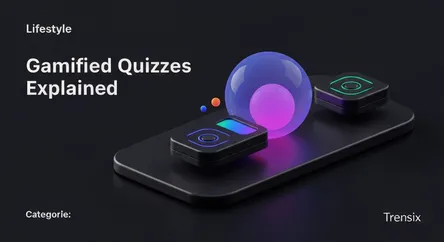Lifestyle
Gamified Quizzes Explained

Discover how gamified quizzes transform education by making learning fun, boosting engagement, and improving knowledge retention with game-like elements.
What is it?
Gamified quizzes are educational assessments that incorporate game design elements to make learning more engaging. Instead of a standard question-and-answer format, they use features like points, leaderboards, badges, timed challenges, and avatars. Platforms like Kahoot!, Quizizz, and Gimkit have popularized this approach, turning study sessions and classroom reviews into lively competitions. The core idea is to leverage the motivational power of games to enhance the educational experience, making the process of learning and knowledge recall feel less like a chore and more like play.
Why is it trending?
This trend is surging due to the widespread adoption of digital technology in classrooms and the growing demand for more interactive educational methods. The shift towards remote and hybrid learning models has further accelerated its popularity, as educators seek effective ways to capture and maintain student attention outside traditional settings. Gamified quizzes provide an immediate, fun, and competitive feedback loop that modern learners, who are accustomed to interactive digital entertainment, find highly appealing. They offer a dynamic alternative to passive learning, fostering a more active and enthusiastic classroom environment.
How does it affect people?
For students, gamified quizzes can significantly boost motivation, participation, and knowledge retention. The competitive, low-stakes environment often reduces test anxiety and makes studying more enjoyable. For educators, these tools provide valuable real-time data on student comprehension, allowing them to instantly identify areas where individuals or the entire class might be struggling. This immediate feedback enables teachers to adapt their lesson plans effectively. Overall, gamification transforms the learning dynamic, fostering a more positive and collaborative relationship with educational content for both students and teachers.